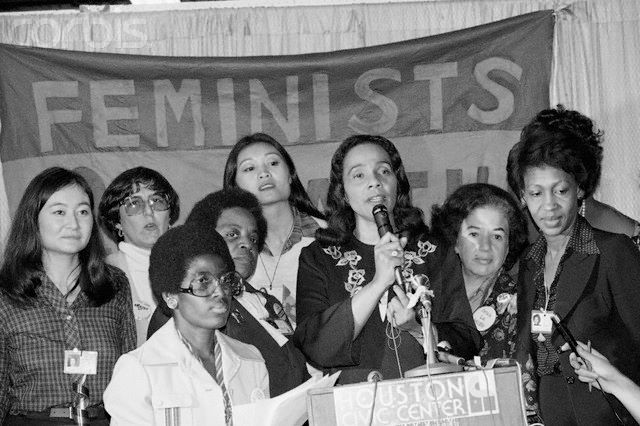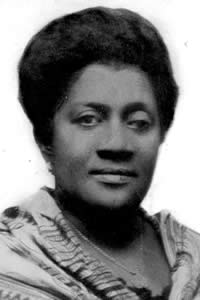On Transnational Black Feminism

At the recent OAH conference in New Orleans, Louisiana, I participated in a roundtable on “Transnational Circulations of Feminism in the Twentieth Century” with Lisa Levenstein (University of North Carolina at Greensboro), Katherine Marino (Ohio State University) and Judy Tzu-Chun Wu (University of California, Irvine). This is the transcript of my brief remarks.
***
Black women and other women of color have been historically marginalized in feminist movements in the United States. When Sojourner Truth delivered her famous “Ain’t I A Woman?” speech at a women’s rights conference in 1851, she was pointing out the irony and certainly the hypocrisy of a movement calling for the rights of women while trying to sidestep the issue of abolition—no doubt a crucial concern for black women in the United States.
On various occasions, the same scene have played out over and over again, as black women vigorously pushed back against white feminists who often advocated a feminist agenda lacking an intersectional approach. When we employ a transnational perspective, what we find is more of the same. Insofar as race is concerned, what a transnational perspective reveals is that the structures of white supremacy that sought to marginalize and even exclude black women in the United States worked to marginalize and exclude them outside of the United States.
Yet, black women in the United States and throughout the globe vigorously resisted such marginalization and exclusion, and they devised a range of strategies and tactics to resist both sexism and racism. One of the avenues they utilized during the twentieth century was the Black Press, a crucial platform for black women in the diaspora to articulate their concerns about a range of issues. With limited access to formal politics and in some cases, with limited access to travel, black women found in the Black Press a space from which to advocate for women’s rights, civil rights, and human rights. In many ways, the Black Press also functioned as a means of bridging divides—especially geographic ones. This is evident, for example, through the pages of the Negro World, the official newspaper of the Universal Negro Improvement Association (UNIA), the largest and most influential black nationalist organization of the twentieth century.

On the women’s page of the Negro World, black women activists articulated the position Sojourner Truth had emphasized so many years earlier: the struggle for women’s rights cannot be divorced from the struggle for civil and human rights. Following the ratification of the nineteenth amendment in August 1920, the Jamaican black nationalist Amy Jacques Garvey praised the amendment for expanding opportunities for women in the public sphere. She was not oblivious to its limitations especially as it pertained to black women in the United States. But, she saw it as a source of inspiration and a step towards greater liberation for all women. In her writings during this period, she often drew comparisons to white feminist movements in her efforts to encourage black women to push harder in the fight for their liberation and the liberation of other people of color. “White women are rallying all their forces,” she argued, “and [they are] uniting regardless of national boundaries to save their race from destruction and preserve its ideals for posterity.” “We see them in the law courts pleading as advocates; they preside as judges and administer laws; while in less numbers, yet they are to be seen in parliaments, congresses and council chambers legislating for their people.” “Be not discouraged black women of the world,” she added, “but push forward, regardless of the lack of appreciation shown [to] you. A race must be saved, a country must be redeemed….”1
Writing from Tela, Honduras, Matilda Ingleton, a member of the UNIA, reinforced this point of view when she called on black women to be vigilant in the fight for women’s rights and black liberation. For Matilda, this was a struggle that began in the home. “The women of every race are the makers of nations,” she wrote in 1924. “If we as Negroes are to establish a nation second to none,” she explained, “we must first of all be intelligent in order to produce to the world intelligence; we must as Negro mothers make a sacrifice to educate our children and give an equal amount of education to our girls as well as our boys, because the women make the nation.”2
In a similar vein, Saydee Parham, an activist in Harlem, emphasized the need to advance women’s liberation without losing sight of the fight for black liberation. In an article entitled, “Women’s Part in Nationhood,” Parham wrote, “Now is the time as never before for [women] to assist in carrying on the task of building a nation for the betterment and advancement of the other members of her race. With her intellect, she is prepared to guide, direct and encourage her people onward until we shall have a free and redeemed Africa.” “No nation can rise higher than its women,” she concluded.3 Though many miles apart, Matilda Ingleton and Saydee Parham were united through the Negro World newspaper, a space from which both women appealed to other black women across the globe to remain unwavering in the fight for women’s rights, civil rights, and human rights. Indeed, the call for “African redemption,” notwithstanding its civilizationist undertones, was a call to end European colonialism. In Parham’s view, this would not be a fight led only by black men but a fight also led by black women.
This message was reiterated time and time again in the Negro World newspaper, and not surprisingly, black women continued to advance a transnational black feminist agenda in the years to follow. Reminiscent of the women’s page of the Negro World, Maymie De Mena launched a column in the New Negro Voice, a black newspaper based in Kingston, Jamaica. An activist originally from Louisiana, De Mena had relocated to Jamaica during the 1930s after spending several years living in Nicaragua. In deciding to launch a women’s newspaper column in Jamaica, De Mena made an effort to advance black feminist politics. Among other things, she used the column to challenge male chauvinism in black nationalist movements and to advocate for more leadership opportunities for women. To further reinforce her position, De Mena organized a series of “women’s nights” in Kingston during the early 1940s, which drew a diverse group of black women intellectuals including Amy Jacques Garvey, writer Amy Bailey, and labor organizer Adina Spencer. These monthly gatherings drew both men and women and provided opportunities for black nationalist women leaders to address crucial issues of the day. Not surprisingly, they offered platforms for these women to articulate feminism, calling for expanded opportunities for black women in black nationalist movements in Jamaican society at large.

During this same period, Jamaican activist Amy Ashwood traveled from London to the United States to promote a transnational black feminist agenda. In April 1944, she began to seek out new political alliances and publicly championed equal rights and opportunities for black women the world over. In a public statement during her visit, Ashwood focused her attention on Afro-Caribbean women living in the United States. Before an audience of mostly African American activists, Ashwood passionately argued that Caribbean women working in the United States should receive wages comparable to those of white men. Recognizing that her appeal for equal pay was one that African Americans certainly shared, Ashwood encouraged unity and transnational collaborations and solidarities in order to advance these goals. To that end, she proposed launching an international black women’s magazine in 1944. In her words, she envisioned the magazine as a means to “bring together the women, especially those of the darker races, so that they may work for the betterment of all.”4 Lack of financial support for the idea thwarted Ashwood’s plans to publish the magazine. However, her plans reflected her commitment to advancing a transnational black feminist agenda—much like the women who preceded her.
These brief examples, from black women’s diverse writings in the Negro World newspaper to the “women’s nights” in Kingston, Jamaica to Ashwood’s speeches in the United States underscore the significance of transnational histories of feminism. All of these women, in one way or another, were sending the clear message that black feminism as a movement could never be framed solely as a national movement when the very structures that black women were resisting were not confined to the nation-state. Indeed, as women resisted patriarchy in Jamaica or in Honduras or in the United States, they were also resisting patriarchy on a global scale. And likewise, when they resisted white supremacy in Jamaica or in Honduras or in the United States, they were also resisting white supremacy on a global scale—an ideology and a system of domination that could not be contained by geographical borders.
If a transnational perspective underscores that white supremacy had no borders then it also underscores that black women’s resistance had no borders either. In the United States, Honduras, Great Britain, Jamaica, and in every corner of the globe, black women activists and intellectuals never ceased in their efforts to advance women’s rights, civil rights, and human rights. For these women, these goals were not only significant but deeply intertwined.
- Amy Jacques Garvey, “Women as Leaders Nationally and Racially,” Negro World, 24 October 1925. ↩
- Matilda Ingleton, “Four Essential Qualities in a Negro Woman,” Negro World, 2 August 1924. ↩
- Saydee E. Parham, “Women’s Part in Nationhood,” Negro World, 22 November 1924. ↩
- Constance Curtis, “Women’s International Magazine Planned As One Avenue To Lead To World Unity,” New York Amsterdam News, 1 April 1944. ↩

Another great piece Dr. Blain. I wonder if it could have been a good idea to include feminists from the African continent. I am thinking of Miriam Makeba (was married to the “Honorary Prime Minister” of the Black Panther Party Stokely Carmichael), and Nana Yaa Asantewa of Ghana. They played different but great roles.
Best regards
James Oloo
@JamesAlanOLOO
Thanks for reading. Your point–about the inclusion of women on the African continent–is well-taken and although I do chart these networks in my larger study, I did not include any in this short talk/piece. I should also add that I would not have included Miriam Makeba or Nana Yaa Asantewaa in this narrative–the former would have been only ten years old during the early 1940s and the latter passed away by the time this narrative begins in the early 1920s.